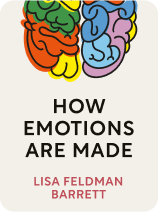

This article is an excerpt from the Shortform book guide to "How Emotions Are Made" by Lisa Feldman Barrett. Shortform has the world's best summaries and analyses of books you should be reading.
Like this article? Sign up for a free trial here.
Is there a relationship between emotions and facial expressions? How can you “read” someone’s emotions, according to psychology?
According to Lisa Feldman Barrett’s research, the idea that facial expression reveals emotion is an outdated concept. Barrett claims that emotions are constructed rather than innate to humans, so a facial expression could have different meanings from one person to the next.
Keep reading to learn why facial expression and emotion actually aren’t related, according to Barrett.
Can Facial Expressions Reveal Emotions?
In How Emotions Are Made, neuroscientist and psychologist Lisa Feldman Barrett challenges many of society’s long-standing beliefs about emotions, calling into question everything from what emotions are, to where they come from and how to control them. Among other findings, Barrett’s research demonstrates that it’s impossible to know other people’s emotions just by looking at their facial expressions or body language, because emotions and facial expressions aren’t universal.
Myth: Emotions are scientifically measurable. By observing someone’s facial expressions, monitoring physical changes in their body, or studying their brain activity, it’s possible to pinpoint what emotion they’re experiencing.
Reality: Barrett contends that emotions don’t exist objectively in nature, so there is no way to measure a person’s emotions, such as by looking at their facial expression, to determine what they’re “really” feeling. Emotions are actually concepts that you learn as a baby and then apply in the moment to help you understand what’s going on around you and inside you.
Facial Expressions, Physiological Changes, & Regions of the Brain
It’s long been thought that you can tell what other people are feeling solely by looking at their facial expressions—a smile means happiness, a frown means sadness, and so on. But Barrett points out that people move their faces in many different ways when experiencing the same type of emotion; they also move their faces in the same way when experiencing different emotions. For example, a person experiencing joy could smile, cry, or shout; a grimace could mean anger, disgust, surprise, or annoyance, to name just a few. Specific emotions do not correspond with specific, singular facial expressions.
(Shortform note: Research conducted by social psychologist Michael Kraus at Yale University supports Barrett’s conclusion that watching people’s facial expressions won’t tell you about their emotions, and he offers an alternate method of reading other people’s emotions: by listening. Kraus carried out experiments comparing people who listen to others but don’t observe them, with people who listen and look simultaneously, and people who look but don’t listen. He found that the former are most likely to read others’ emotions accurately.)

———End of Preview———
Like what you just read? Read the rest of the world's best book summary and analysis of Lisa Feldman Barrett's "How Emotions Are Made" at Shortform.
Here's what you'll find in our full How Emotions Are Made summary:
- A deep dive into what emotions really are and where they come from
- How some cultures have different emotions than others
- The difference between feelings and emotions






